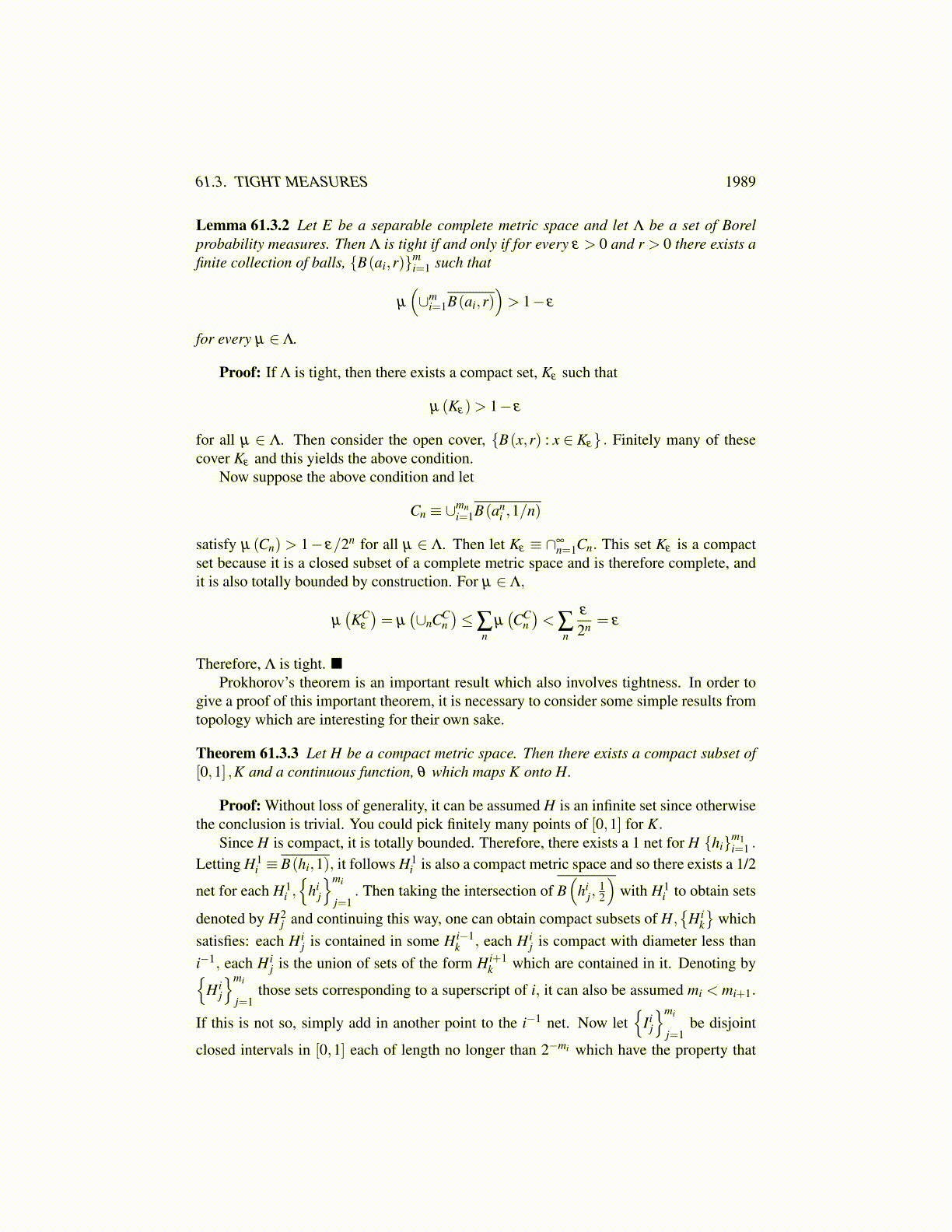
61.2. PROBABILITY MEASURES AND TIGHTNESS 1989
Proof: First note every open set is the countable union of closed sets and every closedset is the countable intersection of open sets. Here is why. Let V be an open set and let
Kk ≡{
x ∈V : dist(x,VC)≥ 1/k
}.
Then clearly the union of the Kk equals V. Next, for K closed let
Vk ≡ {x ∈ E : dist(x,K)< 1/k} .
Clearly the intersection of the Vk equals K. Therefore, letting V denote an open set and K aclosed set,
µ (V ) = sup{µ (K) : K ⊆V and K is closed}µ (K) = inf{µ (V ) : V ⊇ K and V is open} .
Also since V is open and K is closed,
µ (V ) = inf{µ (U) : U ⊇V and V is open}µ (K) = sup{µ (L) : L⊆ K and L is closed}
In words, µ is regular on open and closed sets. Let
F ≡{F ∈B (E) such that µ is regular on F} .
Then F contains the open sets. I want to show F is a σ algebra and then it will followF = B (E).
First I will show F is closed with respect to complements. Let F ∈F . Then since µ isfinite and F is inner regular, there exists K⊆F such that µ (F \K)< ε. But KC \FC =F \Kand so µ
(KC \FC
)< ε showning that FC is outer regular. I have just approximated the
measure of FC with the measure of KC, an open set containing FC. A similar argumentworks to show FC is inner regular. You start with V ⊇ F such that µ (V \F) < ε , noteFC \VC = V \ F, and then conclude µ
(FC \VC
)< ε, thus approximating FC with the
closed subset, VC.Next I will show F is closed with respect to taking countable unions. Let {Fk} be a
sequence of sets in F . Then µ is inner regular on each of these so there exist {Kk} suchthat Kk ⊆ Fk and µ (Fk \Kk)< ε/2k+1. First choose m large enough that
µ ((∪∞k=1Fk)\ (∪m
k=1Fk))<ε
2.
Then
µ ((∪mk=1Fk)\ (∪m
k=1Kk))≤m
∑k=1
ε
2k+1 <ε
2
and so
µ ((∪∞k=1Fk)\ (∪m
k=1Kk)) ≤ µ ((∪∞k=1Fk)\ (∪m
k=1Fk))
+µ ((∪mk=1Fk)\ (∪m
k=1Kk))
<ε
2+
ε
2= ε